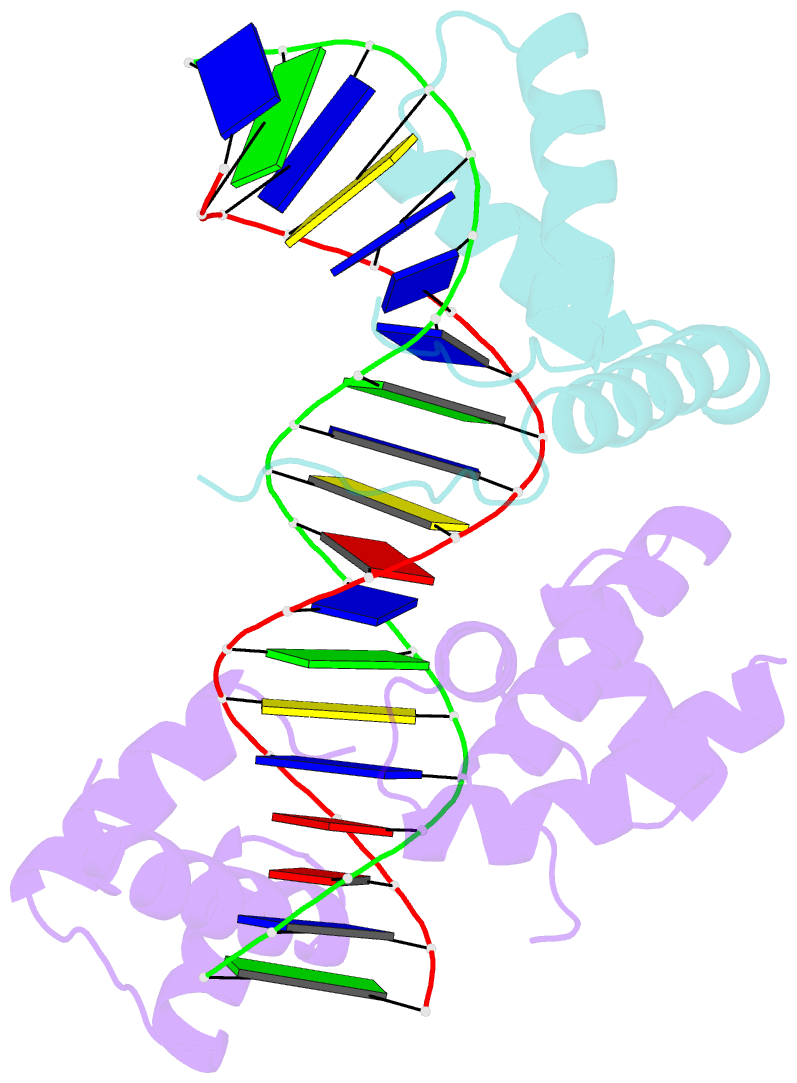Summary information and primary citation
- PDB-id
- 1o4x; SNAP-derived features in text and JSON formats;
DNAproDB
- Class
- transcription-DNA
- Method
- NMR
- Summary
- Ternary complex of the DNA binding domains of the oct1 and sox2 transcription factors with a 19mer oligonucleotide from the hoxb1 regulatory element
- Reference
- Williams DC, Cai M, Clore GM (2004): "Molecular basis for synergistic transcriptional activation by Oct1 and Sox2 revealed from the solution structure of the 42-kDa Oct1.Sox2.Hoxb1-DNA ternary transcription factor complex." J.Biol.Chem., 279, 1449-1457. doi: 10.1074/jbc.M309790200.
- Abstract
- The Oct and Sox transcription factors control many different aspects of neural development and embryogenesis, often binding to adjacent sites on DNA, and interacting with one another through their DNA binding domains to regulate transcription synergistically. Oct proteins contain two DNA binding domains (POUS and POUHD) connected by a flexible linker, which interact with DNA in a bipartite manner. Residual dipolar coupling measurements on the binary Oct1.DNA complex reveal that the two domains are characterized by distinct alignment tensors in both phage pf1 and polyethylene glycol/hexanol liquid crystalline media. We show that this difference is due to a fast microscopic dissociation/association process involving alternative binding modes for the weaker binding POUS domain in the binary complex. Upon binding of Sox2 to an adjacent site in the Hoxb1 regulatory element, all components of the ternary Oct1.Sox2.DNA complex share a single alignment tensor. Thus ternary complex formation increases the site-specific affinity of Oct1 for DNA by effectively locking the POUS domain in a single orientation on the DNA. The solution NMR structure of the ternary 42 kDa Oct1.Sox2.Hoxb1-DNA complex, determined by novel procedures based on orientational restraints from dipolar couplings and conjoined rigid body/torsion angle dynamics, reveals that Sox2 and POUS interact through a predominantly hydrophobic interface, surrounded by a ring of electrostatic interactions. These observations suggest a mechanism of combinatorial control involving direct protein-protein interactions on the DNA whereby Oct1 in conjunction with a co-interacting transcription factor provide cell-specific transcription regulation.





